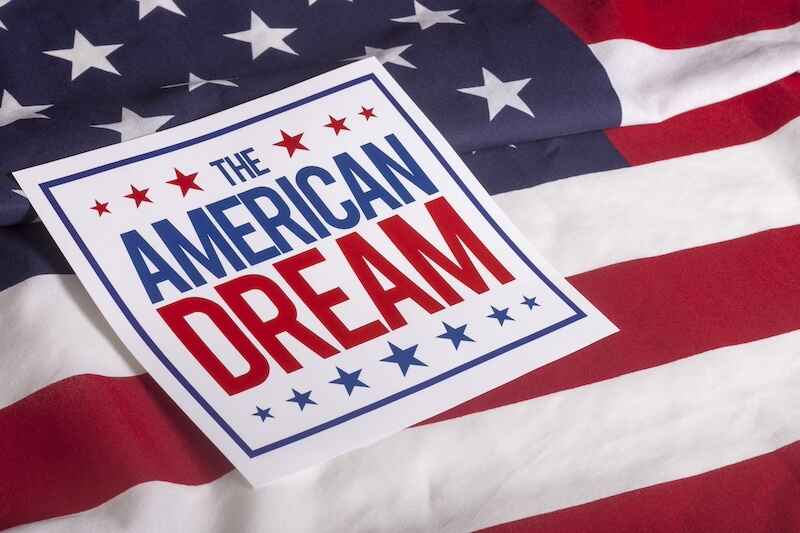Editor’s Note: The Emmy & Peabody Award-winning financial journalist behind Lou Dobbs’s success recently sat down with a famous trader who some Americans claim has changed their lives thanks to a “game-changing” new strategy.
It involves a powerful market force that has outperformed the market by 1,700% (with a 100% win-rate) to start the year.
See why thousands of traders keep raving about this new approach…
And what every investor needs to pay attention to TODAY.
Is it the real deal… or just another fluke?
Click here to see this legendary journalist’s findings >>
– Nicole Labra, Senior Managing Editor
The American Dream – a more than century-old phrase – has always meant different things to different people.
But a good generalization is the belief that everyone in this country has an opportunity to rise as far as their talents and determination will take them.
Yet according to a new poll by the Pew Research Center, almost half of Americans don’t believe it.
When Pew asked a random sample of 8,709 of U.S. adults whether the American Dream is still possible to achieve, 53% answered yes. Forty-one percent said it was once possible – but it’s not anymore. And 6% said it was never possible.
I would find this surprising if the results weren’t so similar to other polls.
The results, in fact, were more encouraging than an ABC News/Ipsos poll taken late last year.
In that poll, only 27% said the dream – defined as “if you work hard, you’ll get ahead” – still holds true.
(That was down sharply from the 50% who believed it when the question was first asked in 2010.)
Eighteen percent said it was never true.
The polling data show some groups are more likely to believe in the dream than others.
Pessimism was greatest among the youngest respondents, a group that – ironically – has the most time and potential on their side.
Better educated adults tend to believe the American Dream is still alive. And so do high-income earners.
These last two groups overlap, of course.
Yet even if your idea of the American Dream is doing something rewarding but relatively low-paying – like doing social work or teaching kindergarten – most realize that money gives you choices.
It allows you to live your version of the dream. So, for most Americans, the dream has a financial component.
A few questions at this point…
Are older Americans more likely to believe in the dream because they’ve been around long enough to have had success achieving it – or are at least experienced enough to realize that such success is possible?
Are better-educated adults more likely to believe the dream still exists because they have more knowledge of the way the world works?
Or is it because education is highly correlated with income – and that income allows them to pursue their version of the dream?
It’s hard to know for sure. But my big question is this: Who has convinced all these millions of young people that the dream doesn’t exist – and possibly never did?
I have two kids in their 20s, Hannah and David. It is too early to say that they’ve achieved the American Dream. Although, while I’m clearly a biased observer, both are well on their way.
I was surprised when my son David came home from middle school one day and told me that his teacher had tried to convince her class that the American Dream doesn’t exist, that it is a joke.
“The American Pipe Dream” she called it.
My son, who spent much of his young life listening to me spout opinions to the contrary, objected loudly.
So much so that his teacher finally invited me into the class to make my case.
I gave a 45-minute presentation making my case, complete with charts and graphs showing the latest data. Afterwards, there was no discussion… and no Q&A. She thanked me for my time. And I never heard from her again.
I have no doubt that she genuinely believes the American Dream doesn’t exist. It’s a free country and she can believe whatever she wants.
But, for my part, I pulled my son out of that school. And it remains a mystery to me why his teacher felt it was important to share her views on this subject with the class.
I can only assume that – since in her mind the American Dream doesn’t exist anyway – she wasn’t deterring anyone. Or stepping on anyone’s hopes and dreams.
The American Dream does exist. It’s available to any American who believes that – and acts on it.
I’ve achieved it. So have many of my friends, family members and co-workers. And so have many of my long-time readers.
Literally hundreds of them have come up to me at investment conferences over the last 23 years and thanked me for making them financially independent – and helping them realize the American Dream.
What is the American Dream? What proof do we have that it’s still available? And, most importantly, what is the best, easiest and most reliable way to achieve it?
I’ve spent over 40 years researching, writing, speaking, and debating about this fascinating subject. And I’ll reveal the surprising results I’ve learned over the next several columns.
Stay tuned…
